Dianthus are a fantastic genus of plants that include the beautiful carnation. Dianthus are easy to grow but problems with soil, water and sunlight can cause their leaves to turn yellow. Bacterial and fungal infections can cause wilting and yellowing leaves on dianthus.
Dianthus come in a range of colors from deep red, pink, yellow and white. Carnations (Dianthus caryophyllus). They grow well in hardiness zones 2-10 and look great throughout the year.

This article will explore the top causes of yellowing leaves on dianthus species including carnations and how you can solve each one.
Top causes of yellow leaves on dianthus
Check out the top causes of yellow leaves on dianthus and how to solve each one.
1. Too much sun
Dianthus are great looking flowers that like mild climates. Too much hot, afternoon sun can cause the leaves to burn turning yellow and then brown on the tips. This damage can continue to get worse if the plant is not protected.
It is best to plant dianthus in a position that gets afternoon shade. Plant them near shrubs or trees that provide them with shade if you get very hot summers.
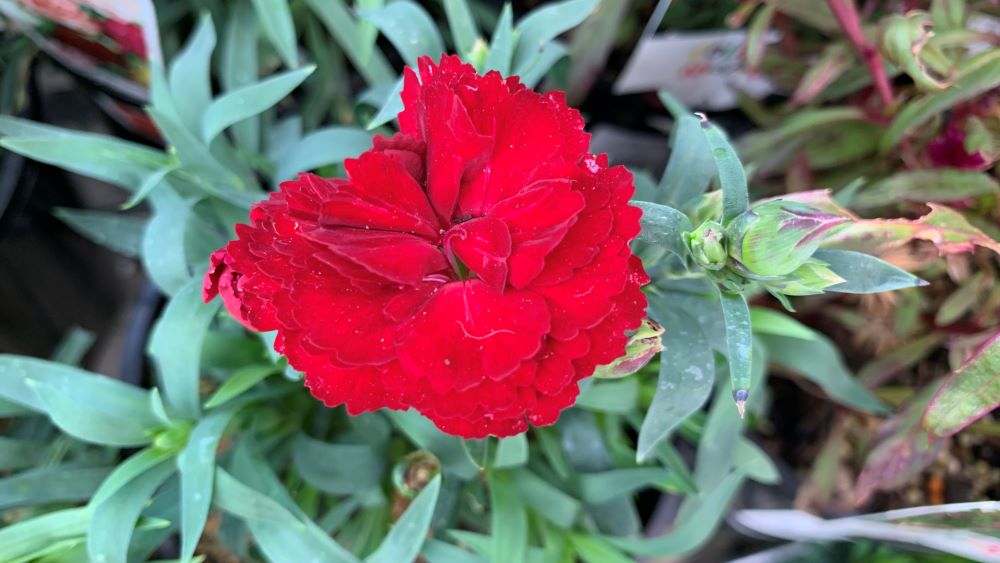
2. Soil is too acidic
Carnations and other dianthus species will grow well in soil that is neutral or slightly alkaline. If your soil is too acidic or (the pH is too low) then it can cause damage to the plant. This will turn the leaves and then stems yellow and then brown over time. It can slow their growth and decrease flowering.
To decrease the acidity of your soil add a handful of garden lime. You can scatter this around the root zone of plants growing in the ground or dig it through the soil before planting. Grab a soil pH kit to be sure that acidity is the problem.

3. Compacted soil
Compacted soil can cause dianthus leaves to turn yellow. Soil that is heavy, or has a high clay component will make it difficult for the plant to absorb the nutrients and water it needs.
Dianthus grow best in well draining soil so mix through some aged cow manure and compost before planting. I like to add general compost I buy in bags or compost that I make at home. Worm castings are also a great organic material to mix through the soil.
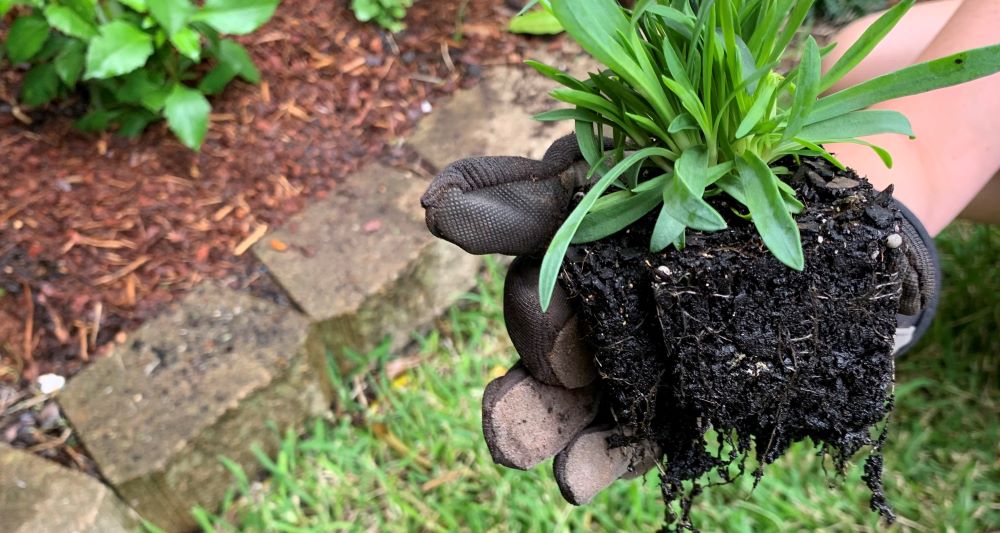
4. Overwatering
Overwatering can cause dianthus leaves to turn yellow. Adding too much water to the soil can wash away key nutrients such as nitrogen causing leaf yellowing. Nitrogen is needed by the plant to form chlorophyll in the leaves which give them their green color.
Overwatering can also compact the soil decreasing the oxygen content and making it difficult for the plant to absorb the nutrient it needs.
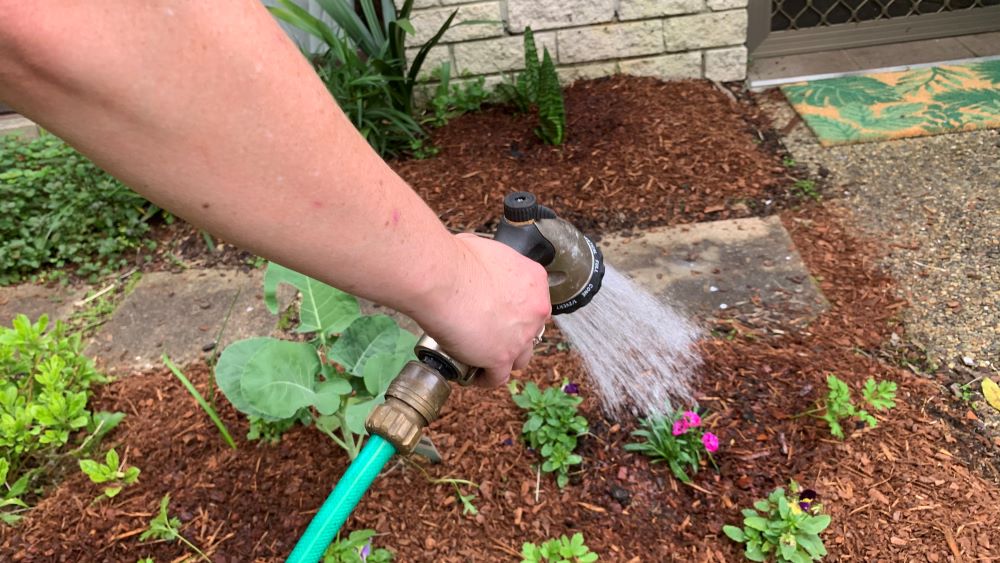
To fix this problem repot plants into fresh potting soil. This will easily replace the nutrients and give the roots plenty of light soil to grow in.
For overwatered dianthus growing in the ground, surround them with mulch to absorb any excess water. Give them a gentle dose of liquid fertilizer that contains nitrogen. I like to use fish emulsion but you can also sprinkle around pelleted chicken manure for a longer lasting dose of nitrogen.
The yellow leaves can return to green if the problem is caught early enough.
5. Basal rot
Basal rot can cause dianthus plants to develop yellow leaves. Basal rot or Fusarium wilt is fungus that can be transferred from plant to plant. Plants can die quickly from this disease so try to catch it early.
The lower leaves will show signs of yellowing first and this will then spread to the rest of the plant. The leaves will then turn brown and the plant will die.
Remove plants if you think they are affected by this fungus. Avoid overwatering your plants, plant new plants in clean pots to avoid transferring the disease and avoid giving the plants too much fertilizer.
6. Lack of nutrients
Dianthus plants that are not getting enough of a range of nutrients including nitrogen, iron and magnesium can develop yellow leaves. Planting dianthus is good quality soil is the best way to prevent this problem.
Mix through aged compost and aged cow manure before planting. Spread a handful of pelleted chicken manure around the plant 2-3 weeks after planting to give them a slow dose of a range of nutrients.
You can give them an extra dose of liquid fertilizer 1-2 times in spring to encourage good growth. Swap to a flower promoting fertilizer in later spring and early summer to encourage more flowers.
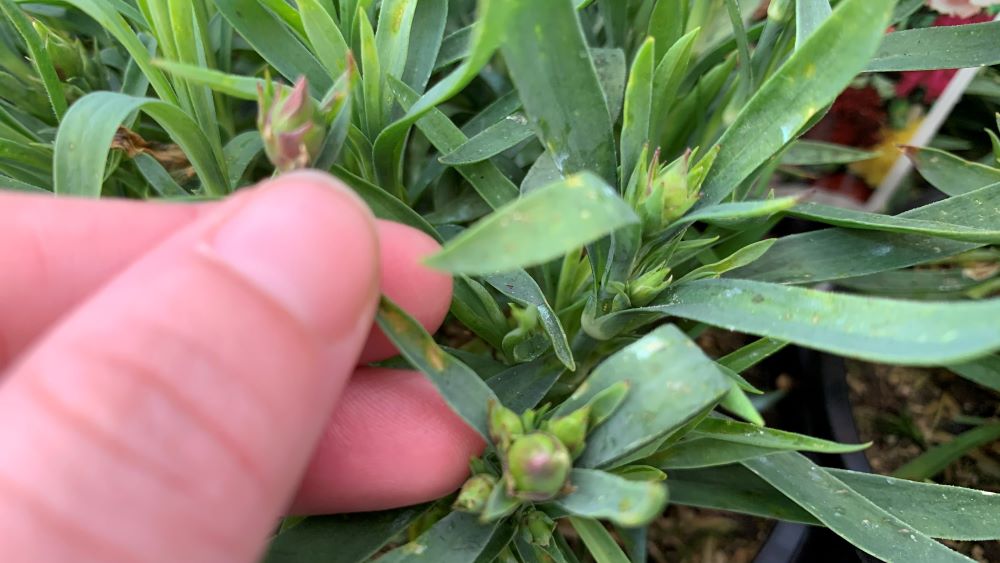
7. Pest attack
Pests can move in to attack dianthus anytime through the year but spring and fall are more common. Tiny aphids, thrips or spidermite can all feed on the leaves causing them to turn yellow. Check the underside of the leaves to see if you can spot any of these pesky, sap sucking insects.
These bugs can be easily treated with Neem oil. This is a concentrated oil that is extracted from the neem oil. It can be diluted at home in a spray bottle and sprayed onto the leaves. It will not harm other insects or pets and can even be used to keep mice and rats away.
Check the plant and repeat the process each week to get rid of the bugs.
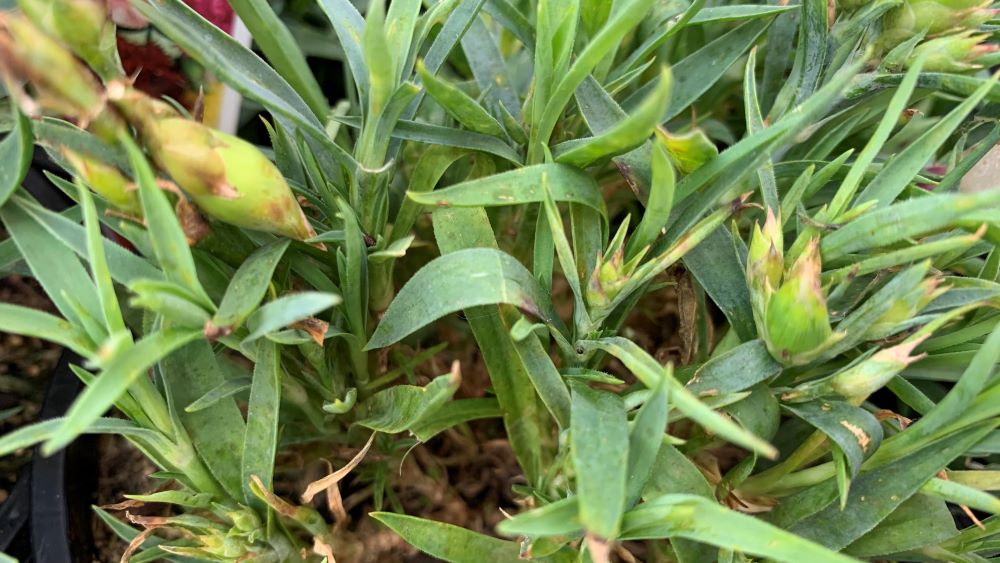
Dianthus Leaves Turning Yellow | Summary
Dianthus leaves can turn yellow if they are not getting the nutrients, water or sunlight they need. Too much hot sun can burn the leaves turning the tips yellow and brown. Nutrients deficiencies such as iron and nitrogen will affect the whole leaf but can leave the veins green.
Protect carnations from hot afternoon sun by placing in a position that gets morning light and afternoon shade. This will give you great flowers without the yellow leaves.
Happy growing.
I am an accredited practicing dietitian, experienced gardener and a dedicated cook. I love writing and sharing my experience so you can learn from my successes and mistakes.
